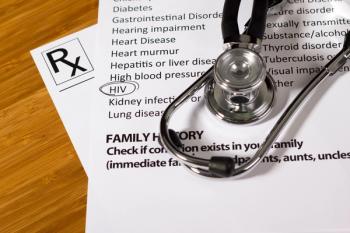
How pharmacists can raise awareness of heart disease among women
Cardiovascular disease (CVD) is the leading cause of death among American women. Every year, 267,000 women die from myocardial infarction and 31,837 die from congestive heart failure. Yet women comprise only 25% of participants in all heart-related research studies.
Fortunately, women's heart clinics are springing up at major medical centers across the country. "Our women's heart program is run through the division of cardiology," said Sharonne N. Hayes, M.D., director of the Mayo Clinic Women's Heart Clinic in Rochester, Minn. "Our goal is to be a center of expertise about women and heart disease, from prevention to diagnosis and treatment."
"Our program was established in June 2003 because of the need to improve cardiovascular care for women," explained Susan Bennett, M.D., director of the Women's Heart Center at George Washington University Hospital in Washington, D.C. "Results of American Heart Association (AHA) polls suggest women do not understand that CVD is their No. 1 health risk," she continued. "We wanted to reach out to the community and help women to better understand their risk of CVD. Even more important, we wanted to provide them with the best preventive care and disease management possible."
Bennett, who is also in private practice with Cardiology Associates, P.C., in Washington, D.C., went on to say, "Research indicates that few primary care physicians understand CVD is the No. 1 killer of women, so we realized that a need existed to educate physicians about women's CVD risk and their symptoms."
Eileen Hsich, M.D., reported that she was hired specifically to start a women's heart failure clinic at the Cleveland Clinic Foundation in Ohio. "The Cleveland Clinic wants to be a leader in cardiovascular care for women and create one of the first women's heart failure clinics in the United States. "Many women's heart centers treat a variety of cardiovascular conditions. However, they do not emphasize gender differences relevant to heart failure, because, unfortunately, it is not a part of our formal training," she said. "Few people are aware of the magnitude of this problem, particularly as it pertains to women. Heart failure affects 2.5 million women, and it affects more women than men."
Hsich explained that the goal behind the women's heart failure program is to eventually create a large women's health center, with each subspecialty represented by a woman physician, so that progress can be made in the ability to tailor therapy according to gender.
Gender-based differences relevant to the diagnosis of CVD do exist, said Hayes, who is also the chair of the Scientific Advisory Board of WomenHeart: The National Coalition for Women with Heart Disease. "We take a gender-based approach to patients that come through the Women's Heart Clinic," she added.
For example, the target high-density lipoprotein cholesterol (HDL-C) value is higher for women than for men, said Hayes. She explained that in women, HDL-C should be at least 50 mg/dL, while in men it should be 40 mg/dL or greater. In addition, Hayes said that waist circumference, one of the criteria for the diagnosis of metabolic syndrome, differs between men and women in terms of what the upper limit is: for women it is 35 inches, while for men it is 40.
"We must also be sensitive to the fact that some diagnostic tests for heart disease must be interpreted slightly differently in women, including some of the nuclear perfusion scans," Hayes continued. She mentioned that recommendations about the use of noninvasive cardiac testing in women were published in the Feb. 8 issue of the journal Circulation.
Luckily, pharmacists can play a key role in helping women prevent and treat CVD. "We see a lot of women who are reluctant to take medications," Bennett said. "For example, many women come to us with hyperlipidemia, for which their physicians have recommended statins. They do not want to take these drugs because they are concerned about liver damage." Pharmacists can put the relative likelihood of such adverse events into perspective for the patient, and stress the importance of initiating therapy, she said. They can also explain to patients that they will be started on a low dose of medication and monitored closely. "We are often able to start our patients on medication once we develop a certain level of trust, and pharmacists are an integral part of building that trust," she said.
Pharmacists who practice in the inpatient setting can play a big role as well. "I have seen pharmacists as part of the care team within medical institutions help with complicated therapeutic regimens, providing the support that patients on such regimens need," said Paula Johnson, M.D., MPH, executive director of the Mary Horrigan Connors Center for Women's Health and Gender Biology at Brigham & Women's Hospital, Boston.
"This support is particularly important for women because, compared with men, women tend to be smaller, have a different metabolism, and, at least in my experience, have more difficulty adhering to multi-drug treatment regimens," said Johnson, who is also medical director of the Center for Cardiovascular Disease in Women at Brigham & Women's Hospital.
Concluded Katie Greenlee, Pharm.D., BCPS, a cardiology clinical specialist in the Department of Pharmacy at the Cleveland Clinic Foundation, "Women often do not recognize the signs and symptoms of heart disease or realize how prevalent CVD is in women. Pharmacists can raise awareness of CVD risk among women, perhaps by offering cholesterol and blood pressure screening."
Newsletter
Pharmacy practice is always changing. Stay ahead of the curve with the Drug Topics newsletter and get the latest drug information, industry trends, and patient care tips.















































































































